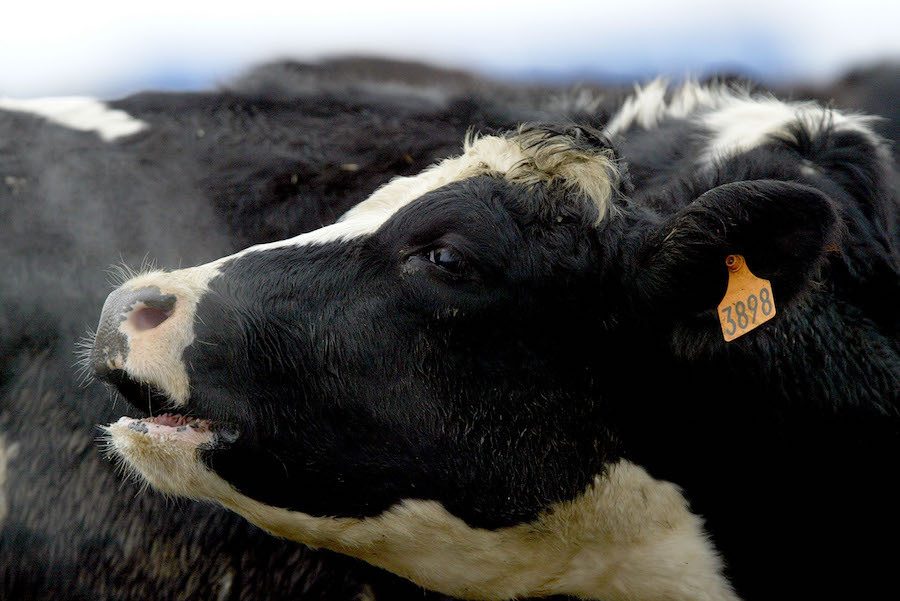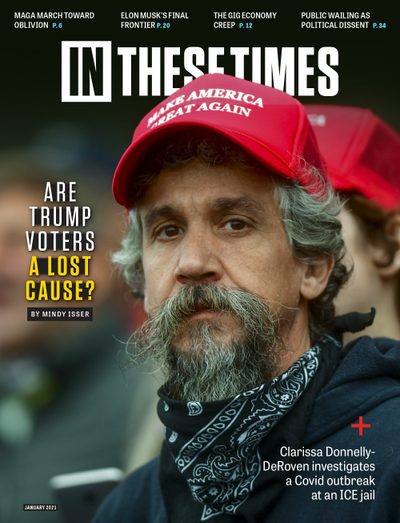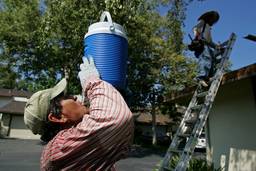From Mad Cow Disease To a Failed Pandemic Response
Health officials did too little, too late to control an outbreak of mad cow disease in the 80s. Sound familiar?
Frank Carber

Prioritizing profit over public health is nothing new in the United States, Covid-19 notwithstanding.
In the late 1980s, an outbreak of mad cow disease (otherwise known as bovine spongiform encephalopathy, or BSE) spread rapidly among cattle in the U.K., and the incurable, brain-wasting disease was known to cause a fatal variant disease in humans who ate infected beef. While the import of British cattle was banned in the United States in 1989, the U.S. Department of Agriculture generally ignored broader calls to prevent a mad cow outbreak here, deferring to industry over science.
In These Times editor and publisher Joel Bleifuss examined the dismal U.S. response in our April 15, 1996, issue:
The U.S. Department of Agriculture (USDA) appears to be following in the footsteps of the British Ministry of Agriculture, Fisheries and Food, which, after years of downplaying the human health risks stemming from mad cow disease, saw the issue erupt into a public health crisis.
… Prodded by this alarming prognosis, the USDA has decided to institute some long overdue regulatory reform. Yet questions remain. Has the department done too little too late? Is the department acting out of concern for public health, or is it protecting the affected industries from an outbreak of public concern?
In 1991, the USDA prepared contingency plans dealing with the possibility that mad cow disease could rear its ugly head in the United States. The department, keenly aware that any battle would be fought in the court of public opinion, drew up a strategy paper titled “BSEPublic Relations.” That plan reads in part, “The mere perception that BSE might exist in the United States could have devastating effects on our domestic markets for beef and dairy.”
… The department seems to believe that what the public doesn’t know can’t hurt it. And to that end it appears to be doing all it can to avoid discovering scientific evidence that would contradict the government’s official position, that BSE “does not exist” in the United States.
… According to [Richard] Marsh [a veterinary scientist at the University of Wisconsin and a member of the government’s Scrapie/ BSE Consultants Group], the [USDA] is examining the wrong cows and using the wrong diagnosis when it does so. For more than 10 years, Marsh has been trying to convince government officials that the United States is very much at risk for mad cow disease — and that, indeed, a form of the malady may already be circulating through the U.S. cattle population.
Sure enough, in 2003, a case of mad cow in the United States was finally confirmed. Trade out Big Ag for Big Tech and Big Pharma, and the present pandemic profiteering landscape feels familiar. Former President Donald Trump and other elected officials have repeatedly downplayed the pandemic, insisting instead on “reopening” the economy — despite more than 400,000 dead Americans at press time.
Frank Carber is a former editorial intern for In These Times. He graduated from Occidental College and his writing has appeared in local news outlets and magazines.





